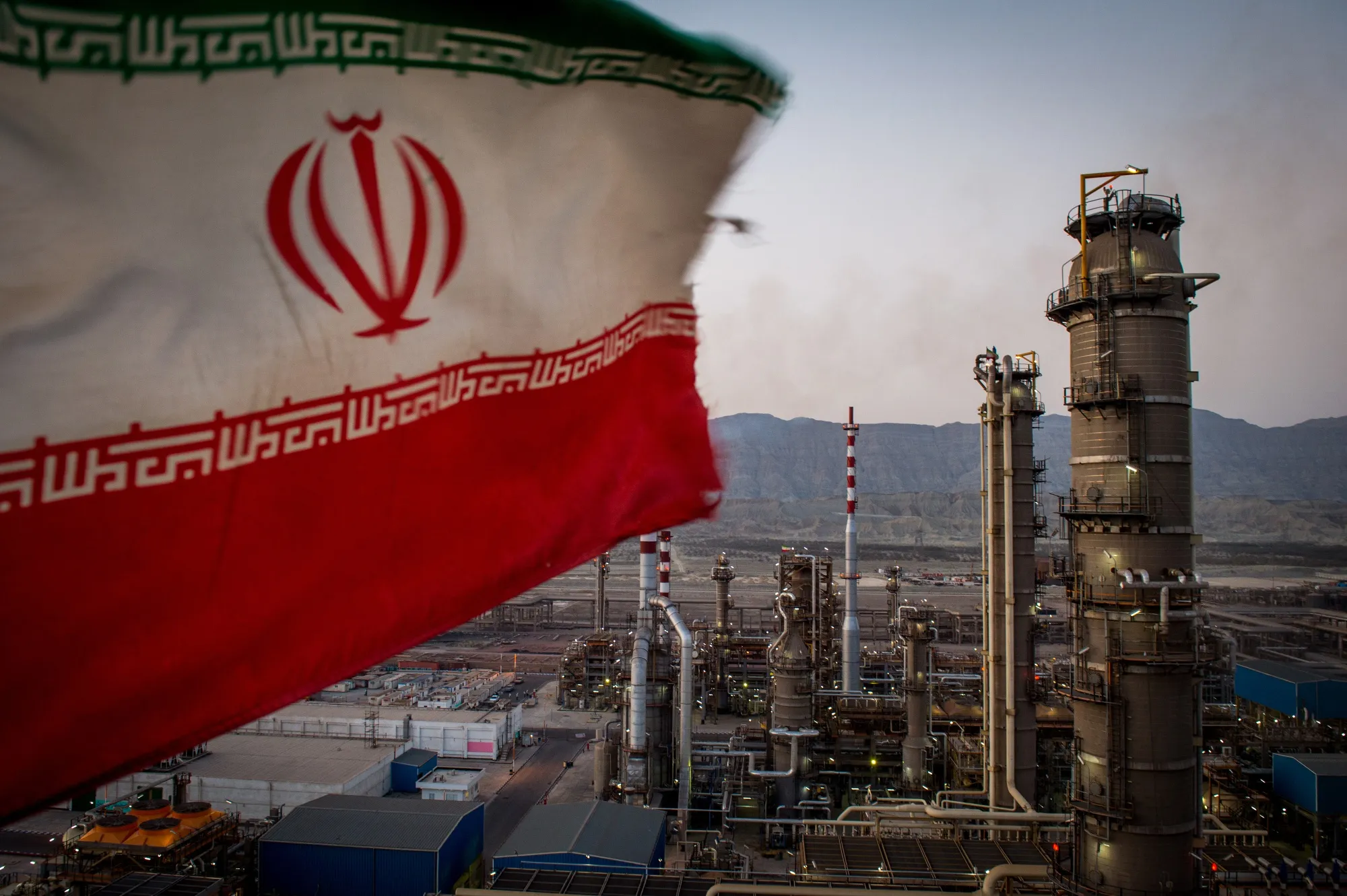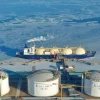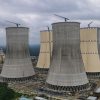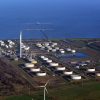Introduction
Iran is home to some of the world’s largest proven natural gas reserves, ranking second only to Russia. Despite this abundance, the nation’s gas energy policies are shaped by a complex interplay of domestic subsidies, evolving export strategies, and persistent international sanctions. Over the past decade, Iran has strived to harness its vast gas reserves to fuel domestic demand, support industrial growth, and secure vital foreign currency earnings through exports. However, mismanagement, underinvestment, and the impact of U.S. sanctions have imposed significant challenges. This article examines the key components of Iran’s gas energy policies, the economic and geopolitical implications, and the future prospects for the nation’s natural gas sector.
Overview of Iran’s Natural Gas Landscape
Iran sits atop massive natural gas reserves estimated at over 32 trillion cubic meters. The enormous resource base—whose development is largely centered on the South Pars gas field—gives Iran a critical strategic advantage in the global energy market. Natural gas constitutes the backbone of the country’s domestic energy mix and accounts for an ever-growing share of electricity generation, industrial feedstock, and household heating. According to recent reports, domestic consumption is fueled by heavily subsidized gas prices, which have, over the years, contributed to high per capita energy use and inefficient consumption patterns.
The South Pars/North Dome field, shared with Qatar, is pivotal to Iran’s gas policy. As the world’s largest gas-condensate field, South Pars supplies a significant portion of Iran’s gas needs. However, production on the Iranian side has been affected by delays in project development and technical challenges, often exacerbated by the uncertainty of foreign investment amid sanctions (en.wikipedia.org).
Government Initiatives and Policy Framework
Domestic Priorities and Subsidized Consumption
The government’s energy policies have traditionally emphasized ensuring that the abundant gas resources meet domestic demand. Over the years, Iranian authorities have maintained extremely low gas prices as part of broad energy subsidy schemes. These subsidies aim to stabilize the local economy and mitigate social unrest by keeping household energy costs affordable. However, they have also led to overconsumption, inefficiencies, and sizable fiscal burdens. In some estimates, energy subsidies have accounted for a significant percentage of GDP, reinforcing inefficient consumption patterns and fostering lucrative contraband markets across neighboring borders.
Additionally, the low price structure not only supports domestic usage but also affects the overall dynamics of Iran’s gas export strategy. Heavy subsidies have made it challenging to bridge the gap between domestic consumption and export targets. Despite this, the government has put in place policies to ramp up investment in gas infrastructure. For example, Iran is investing billions in upgrading facilities at South Pars to sustain pressure and prevent production declines ().
Export Strategies and International Partnerships
Iran’s gas energy policies are not solely inward-looking. In an effort to transform natural gas into a robust source of foreign currency, the government has sought to expand gas exports by developing cross-border pipelines and securing long-term contracts with key regional partners. In recent years, agreements with neighboring countries like Iraq, as well as discussions with Turkey and potential deals with countries in South Asia, have been focal points of export policy.
A notable example is the recent push to boost domestic gas production capacity; Iran’s Oil Minister Javad Owji has stated that the country’s gas output is projected to reach as high as 1.3 billion cubic meters per day over the next five years, up from the current figures (reuters.com). In this context, export deals—often structured to balance domestic consumption and international market requirements—play a crucial role in the government’s strategy. However, these export ambitions are frequently hampered by challenges associated with international sanctions.
Regulatory Framework and Institutional Oversight
Multiple government entities are responsible for the oversight and implementation of gas energy policies. The National Iranian Gas Company (NIGC), for instance, plays a leading role in managing the treatment, transmission, and distribution of natural gas throughout the country and even facilitates export activities through its subsidiary, the National Iranian Gas Export Company (NIGEC). Oversight from the Ministry of Petroleum further ensures that policies are aligned with national interests and that the principle of public ownership is preserved over the country’s natural resources. Key pieces of legislation—ranging from early oil nationalization laws to the more modern regulatory frameworks introduced after the 1979 Islamic Revolution—underscore the state’s commitment to retaining sovereignty over energy resources, even as it permits limited foreign participation under specific contractual agreements (en.wikipedia.org).
The Impact of International Sanctions
Economic and Investment Constraints
International sanctions, particularly those imposed by the United States, have had a profound influence on Iran’s gas energy policies. Since the early 1980s, and more stringently after the U.S. withdrawal from the Joint Comprehensive Plan of Action (JCPOA) in 2018, sanctions have limited Iran’s access to international capital markets and cutting-edge technologies. Without the ability to attract significant foreign investment, many ambitious projects—such as the full-scale development of new phases at South Pars—have been delayed or restructured to rely predominantly on domestic companies.
The adverse effects of sanctions are also reflected in the technology gap in the sector. Technological limitations, particularly in extraction and processing techniques, have hindered the maximization of recoverable gas reserves. At the same time, the reliance on outdated infrastructure further compounds production challenges. These constraints, in turn, limit the potential export volumes and complicate efforts to integrate Iran’s gas sector into global energy trade networks.
Policy Shifts and Adaptive Strategies
In response to these constraints, Iran has implemented various adaptive strategies. One notable approach is the increased role of domestic companies in the development and management of gas fields. With foreign direct investment curtailed, Iranian firms have gradually assumed greater responsibility, as seen in the recent decision to develop certain fields internally rather than engaging in joint ventures with foreign counterparts. While this shift maintains national control, it also reinforces challenges related to technical expertise and capacity, further hindering rapid technological advancement.
Another element of the adaptive strategy is a cautious export policy that seeks to maintain a delicate balance between meeting domestic needs and earning foreign currency. This balancing act has become even more critical as global energy markets evolve and regional partnerships shift in light of ongoing geopolitical tensions. As highlighted by various industry analyses, Iran’s capacity to overcome the significant production gaps and to meet ambitious export targets will be critical to its long-term energy security.
Domestic Challenges and the Role of Energy Subsidies
Balancing Energy Consumption and Fiscal Sustainability
The heavily subsidized regime in Iran’s domestic gas market is a double-edged sword. On one hand, it has prevented major social unrest by ensuring that the public has access to affordable energy—a policy that has been crucial in a country where energy costs have direct implications for everyday life. On the other hand, it has resulted in overconsumption, energy waste, and a significant fiscal burden on the national treasury.
Recent analyses have observed that subsidized prices have led to inefficient energy use and have encouraged practices such as smuggling and unregulated energy consumption. Domestic policy measures, including recent price adjustments and proposals to rationalize subsidies, are aimed at curbing these inefficiencies. However, such measures are politically sensitive; previous attempts to reform subsidy policies have often led to widespread public protests, as seen during the 2019 gas price hikes (ft.com).
Impact on Industrial Production and Infrastructure
The inefficiencies arising from low energy prices also have broader economic implications. Overconsumption leads to a strain on supply networks, exacerbating issues in the power generation sector. Iran’s industrial facilities have at times operated below optimal capacity owing to insufficient or unreliable gas supplies. In some cases, power outages, partly caused by high demand and infrastructural limitations, have disrupted production lines, thereby reducing the overall capacity of the country’s industrial output.
These challenges are closely intertwined with mismanagement and the lack of a coherent long-term strategy. Aging infrastructure and underinvestment in new technologies mean that even with abundant reserves, the ability to convert gas into productive economic output remains suboptimal.
International Partnerships and Future Outlook
Regional Collaborations and Export Potential
Despite the challenges, Iran continues to explore new avenues for exporting natural gas. Recent agreements with neighboring countries such as Iraq and ongoing negotiations with Turkey and other regional players are part of a broader strategy to diversify export markets. By pursuing bilateral deals and joining multilateral initiatives, Iran hopes to secure alternative revenue streams that can help cushion the impact of sanctions on its energy sector.
For example, recent statements by Iran’s Oil Minister underscore efforts to ramp up gas production so that export capacity can gradually increase. With projections that domestic gas output could rise to 1.3 billion cubic meters per day in the next five years (reuters.com), the potential for significant export growth exists, provided that infrastructural and technological hurdles are overcome. The region’s strategic importance in energy markets, coupled with Iran’s vast reserves, renders it an attractive partner for countries seeking long-term, stable supply lines.
Investment Needs and Technological Innovation
Looking ahead, considerable investment is essential to modernize Iran’s gas infrastructure. Projections suggest that tens of billions of dollars will be needed to fully exploit untapped gas fields and to upgrade processing and transmission facilities, particularly in critical areas such as South Pars. Overcoming the adverse effects of sanctions will require not only innovative financial mechanisms but also enhanced domestic production of technological components—a challenge that the government is attempting to address through increased support for local companies.
The development of gas-to-liquids (GTL) technology and other advanced processing techniques represents a promising frontier. Iran has already demonstrated an ability to manufacture the parts required for its gas refineries, and further self-reliance in technology could gradually reduce its dependence on foreign expertise. Success in these areas would bolster the nation’s ability to meet domestic demand, improve energy efficiency, and enhance export competitiveness.
Challenges and Policy Recommendations
Addressing Subsidy Reform
One of the most critical policy challenges remains subsidy reform. Rationalizing energy prices without triggering public unrest is a delicate task. Incremental increases in prices, combined with compensatory measures targeted at low-income households, could gradually improve fiscal sustainability while reducing wasteful consumption. Transparent communication by policymakers about the long-term benefits of subsidy reform is essential to foster public acceptance.
Enhancing Infrastructure and Energy Efficiency
Substantial investment in modernizing energy infrastructure is imperative. Upgrading aging pipelines, introducing combined-cycle power plants, and implementing state-of-the-art monitoring systems can improve efficiency and reduce energy losses. In addition, strengthening partnerships with regional experts and investing in renewable energy sources could ease the burden on the natural gas sector over time. Integrating alternative energy sources—such as solar and wind—into the national grid will not only diversify the energy mix but also improve overall energy security.
Leveraging International Diplomacy
Finally, overcoming the challenges posed by international sanctions will require a robust diplomatic strategy. While the prospects for negotiations with the West remain uncertain, pursuing partnerships with non-Western investors and establishing mutually beneficial energy trade agreements can partially offset the loss of foreign capital. Diplomatic outreach to regional players, combined with targeted economic incentives, may help unlock new investment sources and boost Iran’s export capacity in the near term.
Conclusion
Iran’s gas energy policies lie at the crossroads of abundant domestic resources and significant economic and geopolitical challenges. While the nation possesses vast proven reserves—especially at the critical South Pars gas field—the strategies adopted by the government face persistent obstacles ranging from over-subsidization and mismanagement to the crippling effects of international sanctions.
In response, Iran has prioritized a dual approach: ensuring that domestic energy needs are met through subsidized gas supplies while attempting to boost export revenues via strategic regional partnerships. Investments in infrastructure upgrades and technological innovation are viewed as essential steps toward modernizing the sector. Yet the need to reform subsidy policies and attract meaningful investment remains at the forefront of the agenda.
Looking to the future, the success of Iran’s gas energy policies will depend on the country’s ability to balance domestic welfare with fiscal sustainability, overcome the technological constraints imposed by sanctions, and leverage new international partnerships to ensure a stable position in the global energy market.
By adopting incremental reforms in subsidy management, aggressively modernizing infrastructure, and creatively engaging with regional partners, Iran could reposition itself as a dominant force in the natural gas market despite its current challenges. For policymakers and stakeholders alike, the path forward is complex, but with concerted effort, Iran’s vast natural gas wealth can become a cornerstone of economic resilience and sustainable development in an increasingly competitive global energy landscape.






